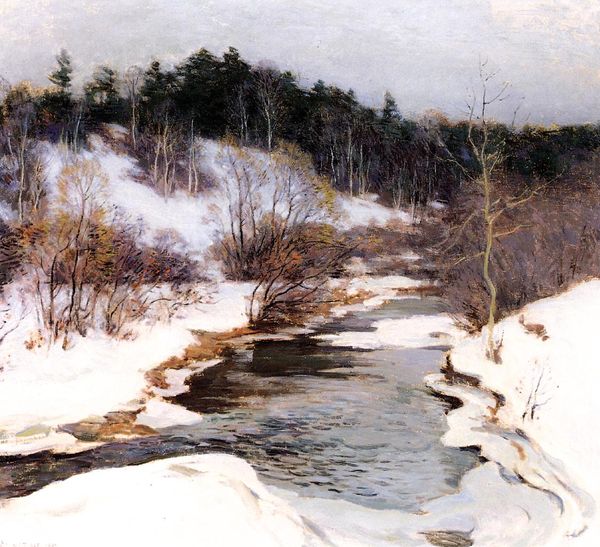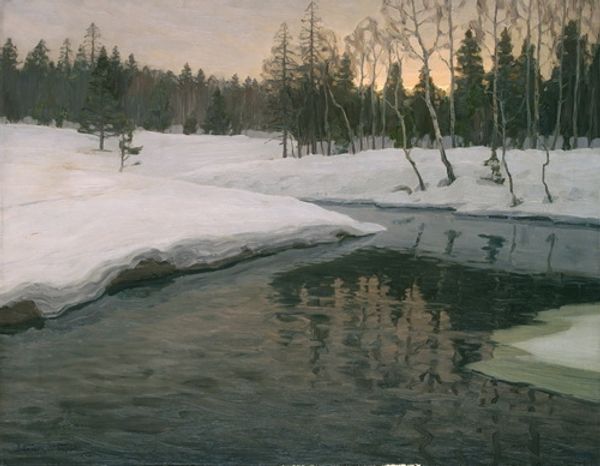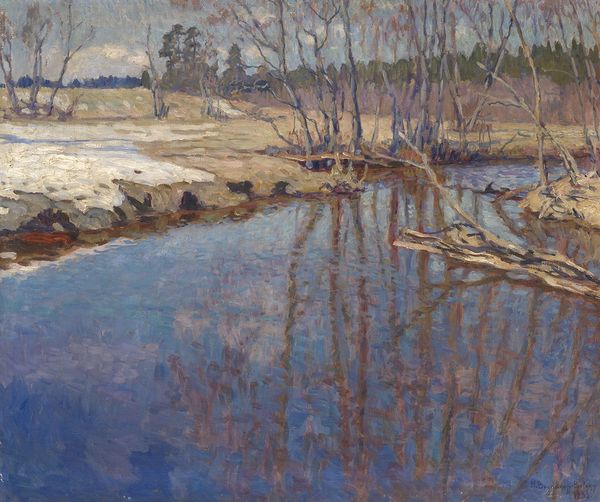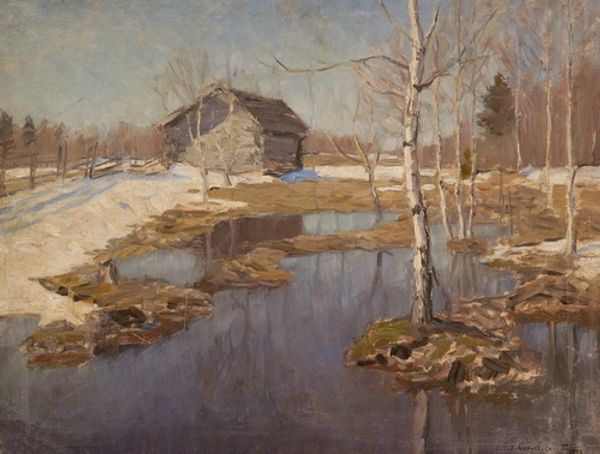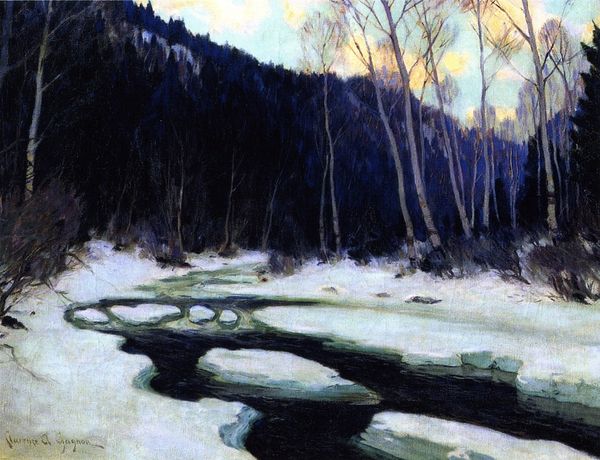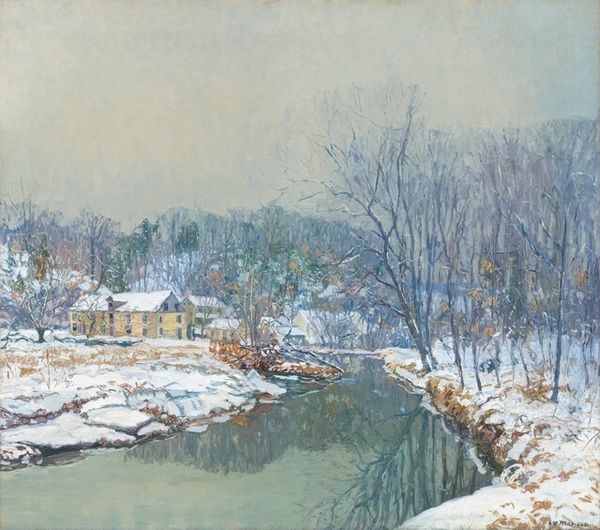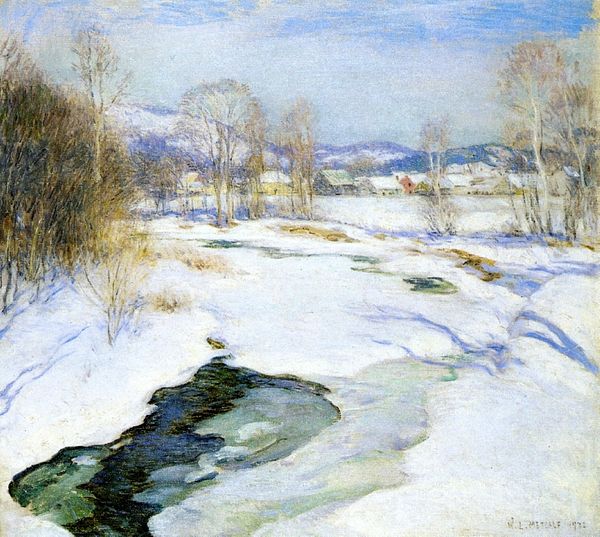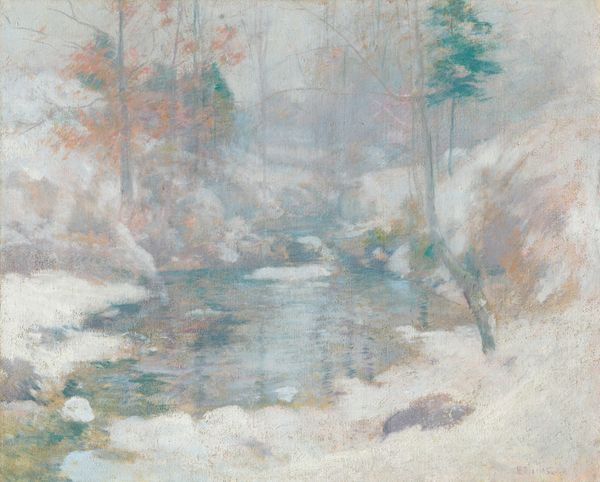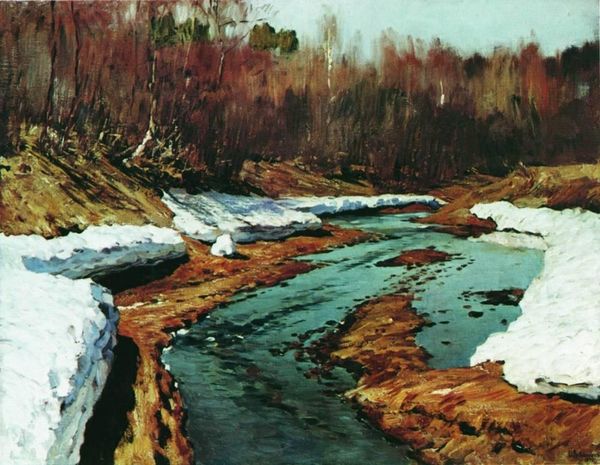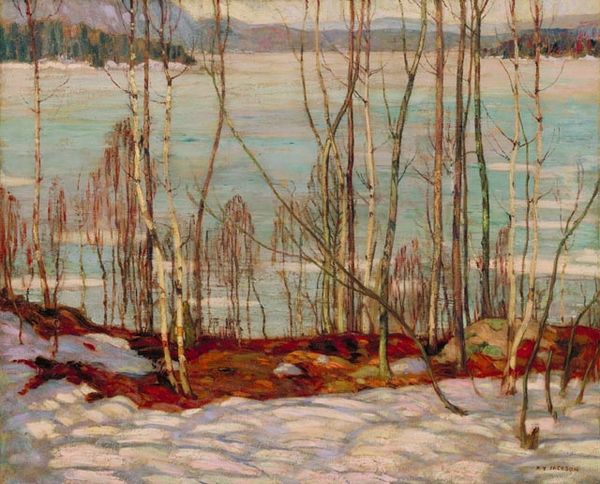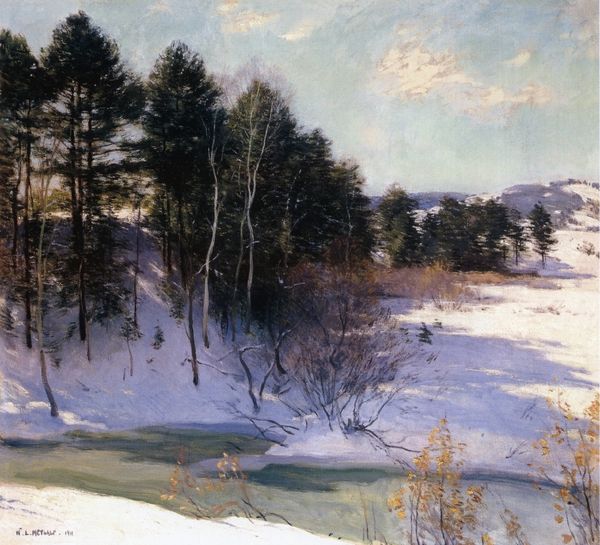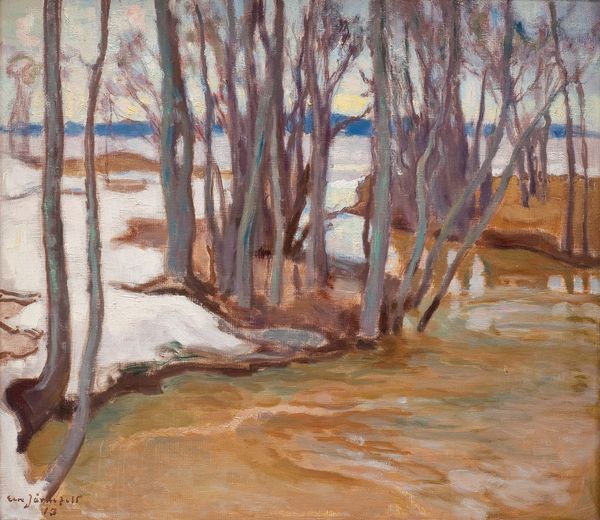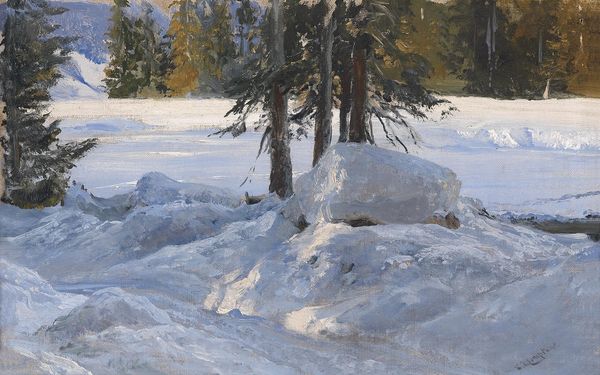
oil-paint
#
tree
#
oil-paint
#
landscape
#
soviet-nonconformist-art
#
impressionist landscape
#
oil painting
#
naturalistic tone
#
naturalism
#
realism
Copyright: Vitold Byalynitsky-Birulya,Fair Use
Curator: "Spring is Coming," painted by Vitold Byalynitsky-Birulya in 1957 using oil paints, offers us a quiet, naturalistic scene. Editor: My initial impression is one of delicate transition, a subdued yet hopeful atmosphere. The muted palette evokes a sense of cold thaw. Curator: The artist was active during the Soviet era, a time when landscapes often served ideological purposes or celebrated industrial progress. Yet, here, he captures a humble corner of nature, free from any overt political narrative. Its creation occurred in a cultural atmosphere that later saw the rise of the Soviet Nonconformist Art movement, signaling resistance. Editor: I'm drawn to the recurring image of water, a classical symbol for transition, purification, and life's ceaseless flow. It almost forms a baptismal setting as the old melts to create new growth. Water here mirrors sky too. Curator: Absolutely. This painting echoes the traditional role of landscapes in Russian art. While the Soviets tried to re-engineer many elements, from life to industry to art itself, the deeply rooted connection between the Russian people and nature continued to subtly manifest, especially through art and literature. Editor: See how the skeletal trees point towards the heavens like figures in supplication or aspiration? There's a persistent sense of yearning that weaves throughout the piece. You feel the pulse of spring held at bay in anticipation, as this melting mirrors something far grander and the river flows away with those hopes. Curator: It highlights a complex cultural interplay, I think. Official artistic doctrines demanded grand narratives, while this artist chose to capture the silent revolution occurring in the natural world, in tune with the broader culture of nonconformity growing at that time. Editor: Precisely. Looking again, I notice hints of pale blues and pinks amidst the predominant grays, maybe a conscious expression, perhaps, or something more unconscious, which provides gentle foreshadowing. I think those colours carry the emotional weight and echo cultural memory for nature itself. Curator: Considering the era, its tranquil depiction is an interesting commentary in itself. The landscape, then, might stand as a quiet act of resistance, emphasizing the enduring strength of natural cycles against fleeting political agendas. Editor: And within those natural symbols, water and trees for instance, the emotional resonance and enduring qualities speak even now. Thank you, it makes me pause to reflect anew.
Comments
No comments
Be the first to comment and join the conversation on the ultimate creative platform.
